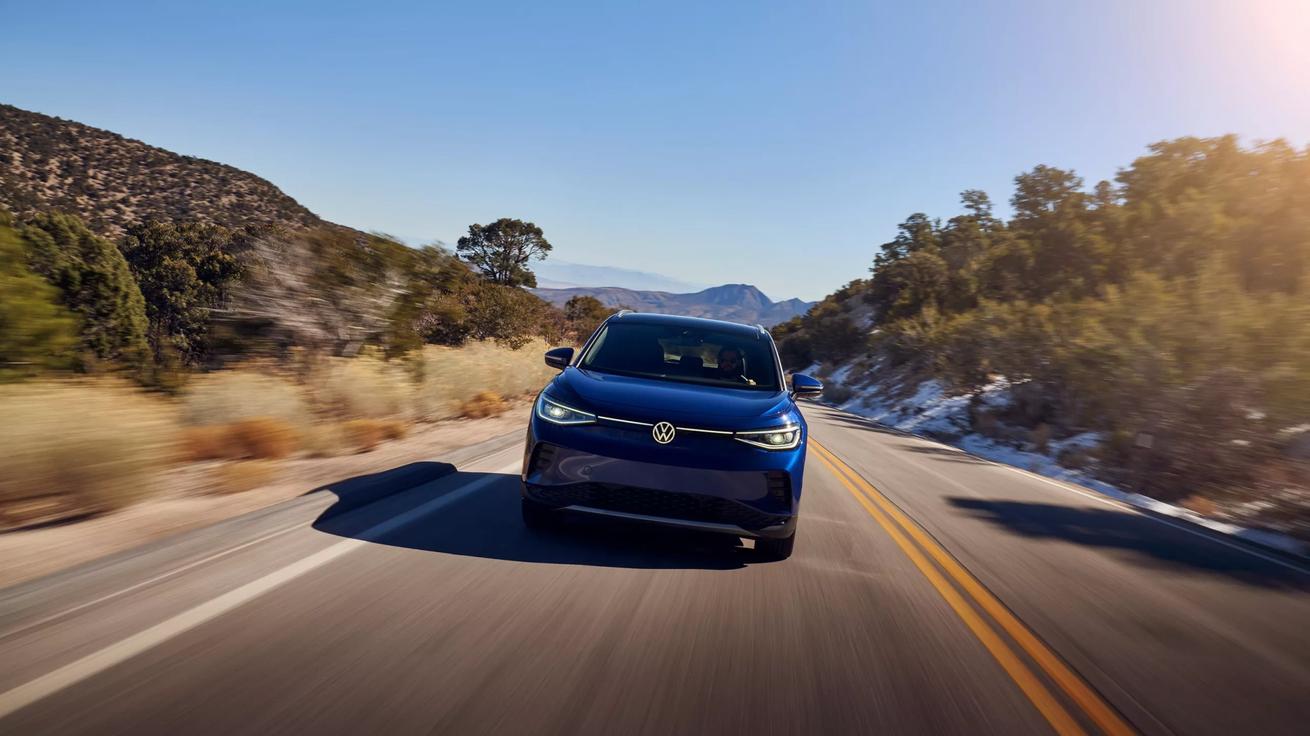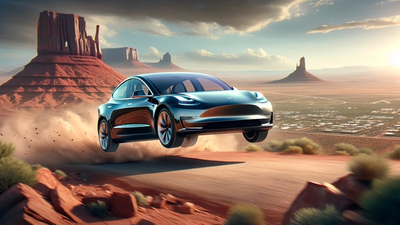It’s no secret that motor vehicle emissions are one of the main sources of pollution in the state of California and one of the leading causes of climate change in the country. Californians collectively drive over a billion miles every day, releasing tons of greenhouse gases (GHG) and pollutants into the air. The only way to avoid more expensive and disruptive climate changes is to significantly reduce these emissions. So, if you’re looking to do your part to stop climate change, your vehicle is a great place to start.
By switching from a gas to an electric vehicle, the average American can reduce their individual carbon footprint by over 25%, helping the U.S. toward our goal of cutting GHG by 50% by 2030 to avert the most catastrophic effects of the climate crisis. California, like the rest of the world, has already begun to experience these effects, from rising sea levels to rampant wildfires. But the state is looking to lower its impact on climate change.
To accomplish this, California has introduced a number of tax credits, rebates, and grants aimed at reducing air pollution and encouraging California drivers to make the switch to low-emission or no-emission vehicles. These incentive programs, which include EV rebates, tax-free grants, and rewards for retiring older high-emission cars and trucks, are part of a long-term plan to phase out the sale of new gas-powered vehicles by 2035.
Motor Vehicle Emissions at a Glance:
- California produces more than 1,000 tons of pollutants and more than 534,000 tons of greenhouse gas emissions every day.
- The state’s 22 million passenger cars and light trucks make up 21% of nitrous oxide (NOx) emissions and 58% of PM2.5 air pollution in the state.
- NOx causes acid rain and chronic respiratory illnesses like asthma.
- PM2.5 is particulate matter that causes premature deaths.
- 93% of Californians live in areas that fail to meet health-based federal or state air quality standards.
- Black and Latino communities are exposed to 43% and 39% more deadly PM2.5 air pollution than white Californians.
Making Electric Vehicles More Affordable: EV Life
When it comes to buying a car, you shouldn’t have to choose between saving the planet and saving money. EV Life is on a mission to make it more affordable for you to drive an electric vehicle than a gas vehicle. We help drivers take every available tax credit, rebate, and grant available to them to offset the cost of an EV and apply that money to a low-interest EV Climate Loan to finance their purchase.
There’s never been a better time to reduce your carbon footprint and save money at the pump by making the switch to an electric vehicle. In this guide, we’ll explore some of the programs that may help Californians significantly reduce the starting cost of a new EV.
$7500 Federal EV Tax Credit
The Inflation Reduction Act of 2022 renewed and expanded funding for the federal EV tax credit through 2032 for qualified drivers looking to purchase an electric vehicle. Applicants can receive a non-refundable tax credit of up to $7,500.
From January 1, 2024, the federal EV tax credit is now available as an upfront discount applied at point of sale for eligible vehicles and qualified buyers.
California grants for retiring older gas-powered vehicles
California will even pay you to get your old gas guzzler off the road. The Clean Cars 4 All program helps eligible lower-income consumers switch to EVs by retiring their older, higher-polluting vehicles and upgrading to cleaner ones. Residents of the Bay Area, South Coast Area, San Joaquin Valley, and Sacramento area who meet income and vehicle eligibility requirements may qualify to receive a rebate of up to $9,500 toward the purchase of a new or used plug-in hybrid electric, battery electric, or fuel cell electric vehicle.
The Bureau of Automotive Repair’s (BAR) Consumer Assistance Program (CAP) also offers repair assistance and vehicle retirement options meant to lower the state’s emissions. Under CAP, California residents that meet income eligibility requirements can receive up to $1,500 to retire their vehicle. Californians cannot receive money from more than one vehicle retirement program, so be sure to check your eligibility and apply for the program that will get you the best value for your situation.
Retired: Clean Vehicle Rebate Program (CVRP)
California’s popular Clean Vehicle Rebate Project rebate was retired on November 8, 2023. However, there is still a wide variety of state and local incentives available to eligible California drivers. Check EV Life’s Savings Calculator to see what you qualify for.
Local California EV Incentives
There is still a wide variety of state and local incentives available to eligible California drivers. Check EV Life’s Savings Calculator to see what you qualify for.
Save big with the EV Climate Loan
When you apply for the EV Climate Loan with EV Life, we help you save big on driving electric:
- Pre-qualify for more than financing. EV Life’s application process is easy and fast. We’ll ensure that you qualify for every tax credit, rebate, and other incentive you’re eligible for, then help you file all the paperwork with our “Turbo Tax-style” incentive filing tools.
- Bundle charging. An EV Life loan enables you to get an instant quote for home charger installation and bundle it into auto financing, reducing your upfront costs.
- One low payment. The EV Life loan applies all your savings directly to your loan, significantly reducing your monthly payment.
Don’t navigate the complex and ever-shifting EV incentive process alone. Financing with EV Life guarantees the best prices and the lowest rates on your EV, saving the planet while saving your pocketbook.
Get pre-qualified today to find out how much you could save on your electric vehicle.





